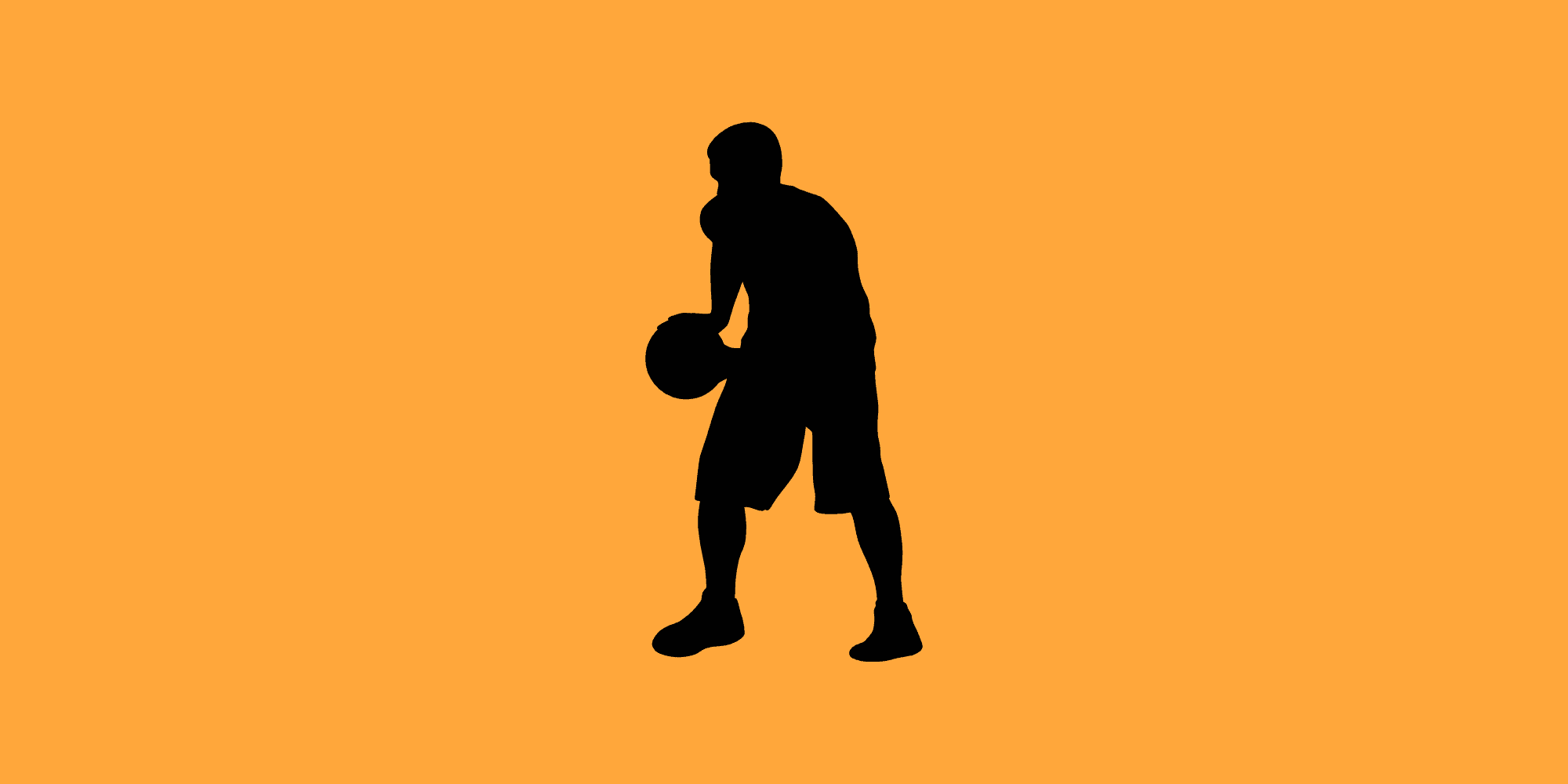The triple threat position is a term that really gets people’s attention, especially younger players who are hearing the cool string of words for the first time.
For a novice basketball player, the first instinct upon receiving a ball is to put it on the floor and start dribbling. Beginners don’t like facing defensive pressure and immediately dribble to get away from the defense.
However, this takes away the triple threat! More often than not, the first thing a player should do when they receive the basketball is to square to the basket and establish the triple threat position, a.k.a. triple threat stance.
So while the term might sound advanced, it’s actually the most fundamental stationary position for a player to hold the ball. It’s used across all skill levels, by beginners and pros alike.
What Is the Triple Threat Position?
So now you know that the triple threat position is an extremely important position to adopt as soon as you’ve got hold of the ball.
But what is the so-called “triple threat” we’ve created by establishing this stance?
Well, in this position the player has three options:
- Shoot
- Pass
- Dribble
It’s called the triple threat position because an offensive player can do three things from being in this position: shoot, pass or dribble the ball. By not telegraphing your next move, you keep defenders guessing and open up the entire court.
If you’ve watched an NBA game before, you’ve almost certainly seen a player in the triple-threat stance. Knees bent with a low center of gravity, one foot forward, and ball held close to their hip away from the defender.
How To Get Into The Triple-threat Position
Here’s how to get into the triple threat position:
- Catch the ball with both hands and stand with knees slightly bent
- Square feet to the basket and establish a pivot foot
- Keep weight shifted onto the balls of the feet
- Hold the ball in a protective pocket between shoulder and knee
- Keep elbows pointed out to protect the ball
Tips To Master The Triple-threat Position
That’s the basic technique for getting into the position, but you should also be mindful of the following key points:
Keep your center of gravity low
The reason we keep feet shoulder-width apart and knees bent are that we want to be able to take a shot, make a pass or start a dribble quickly. All three of these options need you to start low, be in control of your body and be ready to explode.
Furthermore, from this position, you’ll occasionally twist your torso and perform a jab step to deal with the defender in front of you. You need to be firmly planted on the ground to avoid losing balance.
Eyes up
A common mistake is to get into the 3T position and keep your head down with eyes locked on your defender’s feet. This is a big no-no because you’ll lack any awareness of your surroundings to plan your next move.
At the very least you should keep your eyes up and scan the court to understand the situation around you. Even better, keep your eyes on the rim and take in your surroundings using peripheral vision. This makes the defender and your other opponents think you are going to shoot, and that will make a pass or drive much easier!
Avoid traveling
One of the hardest parts about the triple threat is to use your feet effectively. It’s imperative that you keep your pivot foot, whichever foot you chose, anchored to the ground until the ball has left your hand. Otherwise, a traveling violation can be called.
Fake out your defender
As you get more comfortable with the triple threat stance, you’ll want to take it a step further by sprinkling in moves like jab steps, head fakes, and pump fakes. These more advanced techniques can send the defender the wrong way or make them lose balance, giving you the chance to score easy points or drive to the basket.
Defending Against The Triple threat position
Because a skilled player can do anything from a triple threat position, it can be incredibly difficult to defend against a player whose next move is unknown.
Aside from getting into a balanced defensive stance, there are no set rules on how you should defend. Because this is an iso (one-on-one) situation, a lot of it will come down to the physical matchup and skill difference.
There are some important things to keep in mind, like distancing and positioning.
You generally want to be close enough to contest a jumper, but also far enough to stop a drive. Around an arm’s length is a good rule of thumb, although this will of course depend on the matchup.
In terms of position, you want to position yourself so that you force the attacker to their weak side. For example, if they are right-handed, you can put your right foot forward to encourage the player to drive left.
Finally, it’s important to learn about your opponent’s habits. During the game, you’ll develop an instinct of what they like to do out of a triple threat. Some players are more predictable than others, and you can use this predictability to your advantage.
Disadvantages Of The Triple-threat Position
It’s very common for basketball coaches to teach players to assume the triple threat position immediately after receiving a pass. Of course, this won’t apply if you’re playing in the post with your back to the basket, but it’s the go-to action for perimeter players (guards and wings).
However, basketball coach Vic Pruden advocates against always getting into the triple threat stance because it disrupts the flow of play and results in dead time. Basically, he believes players should be playing all the time and immediately passing, shooting, or initiating a dribble.
There’s definitely some truth to this. In the NBA for example, it’s common to see players take valuable seconds off the shot clock getting into the 3T position and preparing their next move. By comparison, European competition generally sees less inefficient stop-and-go basketball and a more flowing game.
Do you agree with coach Vic? Let us know in the comments below!

